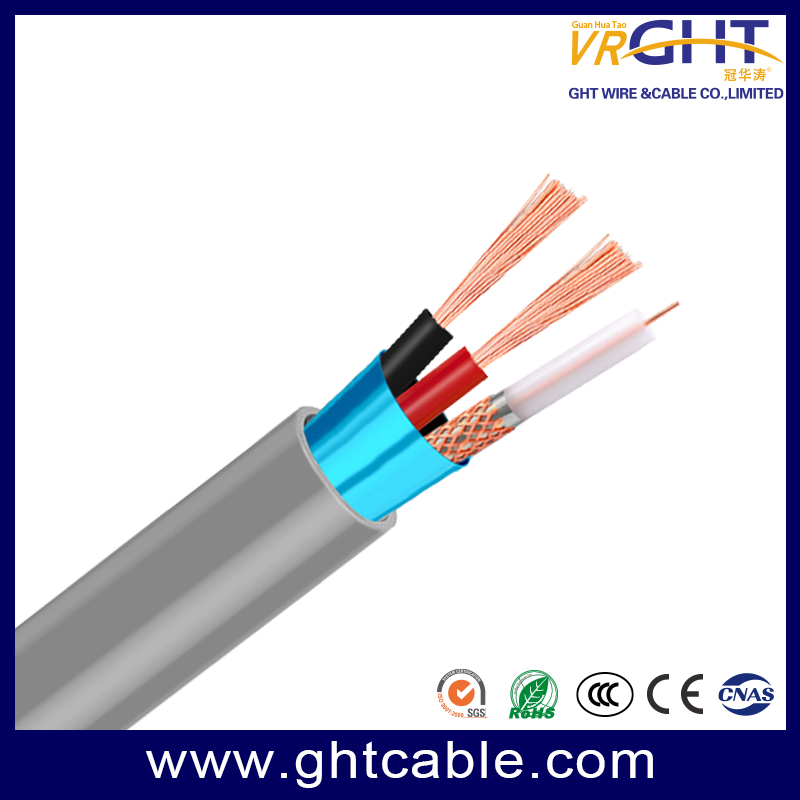
Coaxial Cable vs Fiber Optic Cable: Which One Is Better for You?
In today's world of high-speed connectivity, both coaxial and fiber optic cables play essential roles in transmitting data, video, and voice signals. Whether you are setting up a home network, upgrading your business communication system, or installing a large-scale data infrastructure, choosing the right type of cable can make a significant difference in performance, reliability, and cost.
At VRGHT, we have extensive experience supplying high-quality coaxial and fiber optic cables to clients across different industries. We understand that each application requires a tailored solution, and that's why knowing the differences between these two types of cables is vital before making a decision.
What Is a Coaxial Cable?
A coaxial cable, often called a coax cable, is a traditional type of electrical cable designed to transmit high-frequency signals with low interference. It consists of a central conductor (usually copper), surrounded by an insulating layer, a metallic shield, and an outer protective jacket. This structure minimizes electromagnetic interference (EMI) and makes it ideal for television, CCTV systems, internet modems, and radio frequency (RF) applications.
Coaxial cables have been in use for decades because they are durable, easy to install, and relatively affordable. Despite the emergence of fiber optics, they continue to be a reliable choice for short- to medium-distance data transmission.
What Is a Fiber Optic Cable?
A fiber optic cable uses strands of glass or plastic fibers to transmit data in the form of light pulses. Unlike coaxial cables, which rely on electrical signals, fiber optics enable faster transmission over much longer distances without signal degradation.
There are two main types of fiber optic cables:
- Single-mode fiber (SMF) – Designed for long-distance, high-bandwidth communication.
- Multi-mode fiber (MMF) – Ideal for shorter distances and lower-cost installations such as within buildings or campuses.
Fiber optic cables are the backbone of modern telecommunication networks, internet backbones, data centers, and 5G infrastructure.
Key Differences Between Coaxial and Fiber Optic Cables
1. Data Transmission Speed
Fiber optic cables can transmit data at the speed of light — literally. They offer higher bandwidth capacity, allowing the transfer of massive amounts of data simultaneously. In contrast, coaxial cables are limited by their electrical signal transmission, which can experience resistance and signal loss over long distances.
For home users, coaxial cables may still provide sufficient speed for streaming, gaming, and browsing. However, for businesses or data-heavy operations, fiber optic is clearly the faster and more scalable choice.
2. Distance and Signal Loss
When it comes to transmission distance, fiber optic cables outperform coaxial cables by a wide margin. Electrical signals in coax cables degrade over several hundred meters, while fiber optics can carry data over kilometers without significant loss.
For example, large-scale communication systems, backbone networks, and citywide connections rely almost exclusively on fiber optics because of their ability to maintain consistent performance over long distances.
3. Bandwidth and Performance
Bandwidth refers to the amount of data that can be transmitted at one time. Fiber optic cables offer significantly higher bandwidth compared to coaxial cables, making them ideal for high-definition video streaming, cloud computing, and enterprise-level networking.
Coaxial cables, on the other hand, are often sufficient for residential use or smaller business networks, where the bandwidth demands are moderate.
4. Durability and Installation
Coaxial cables are known for their robustness and flexibility. They can be easily installed in existing conduits and are resistant to bending and rough handling. Fiber optic cables are more delicate because they use glass fibers, which require careful handling during installation to prevent breakage or signal loss.
At VRGHT, we supply both coaxial and fiber optic cables designed for durability and long service life. Our products comply with international quality standards and are suitable for a variety of environments — from residential to industrial and commercial applications.
5. Cost and Maintenance
Cost is a major factor for many users. Coaxial cables are generally more affordable and easier to install, making them a cost-effective solution for shorter distances or smaller-scale networks.
Fiber optic cables, while initially more expensive, offer lower maintenance costs and better long-term value due to their superior performance and resistance to electromagnetic interference.
When evaluating total cost of ownership, fiber may prove more economical for organizations with high data demands or future scalability plans.
6. Applications
- Coaxial Cables: Used in TV broadcasting, CCTV systems, broadband modems, radio transmitters, and satellite communication.
- Fiber Optic Cables: Found in telecom networks, data centers, 5G base stations, medical imaging systems, and military communication networks.
Both cable types have their strengths, and the best choice depends on your specific requirements.
Which One Should You Choose?
The answer depends on your application:
- Choose coaxial cables if you need an affordable, easy-to-install solution for short-distance transmission, TV systems, or security networks.
- Choose fiber optic cables if you require high-speed, long-distance, and high-bandwidth connectivity for enterprise, telecom, or data center use.
At VRGHT, we don't believe in a one-size-fits-all approach. We work closely with our clients to evaluate their needs and recommend the most suitable cable solution. Whether your project involves upgrading existing coaxial systems or transitioning to fiber optics, we can help you achieve optimal performance with high-quality materials and expert technical support.
Future Trends: Coaxial and Fiber in Harmony
While fiber optics dominate the future of high-speed communication, coaxial cables still have an important role. Hybrid systems combining fiber and coaxial infrastructure (such as HFC — Hybrid Fiber Coaxial networks) are increasingly popular for cable TV and internet providers.
These hybrid systems leverage the strength of both technologies — using fiber for long-distance backbone transmission and coaxial for local distribution. This approach provides cost savings while still improving overall performance.
As technology evolves, VRGHT continues to innovate and expand our cable portfolio to meet the growing demands of modern communication systems. We're committed to helping our customers build reliable, future-proof connectivity networks with precision-engineered coaxial and fiber optic solutions.
Conclusion
Both coaxial cables and fiber optic cables serve vital roles in the world of data and communication. Coaxial remains a reliable, cost-effective option for short-distance and residential applications, while fiber optic leads in speed, distance, and bandwidth.
Ultimately, the best cable depends on your unique requirements — and that's where we at VRGHT come in. We offer a comprehensive range of high-performance cables designed to deliver consistent signal quality and long-term reliability. Whether you're upgrading a network or building a new system from the ground up, we can help you find the perfect solution for your project.










Leave a comment